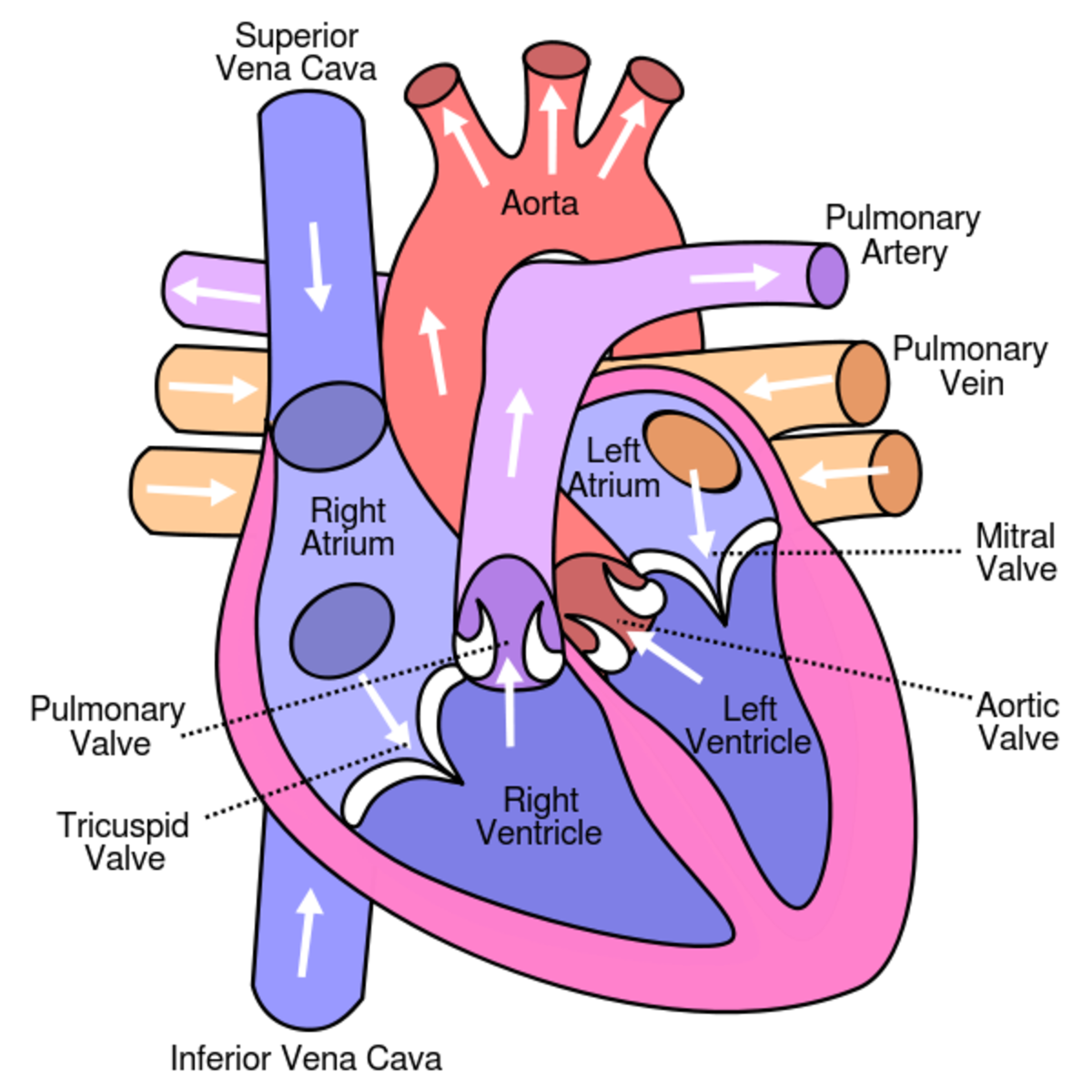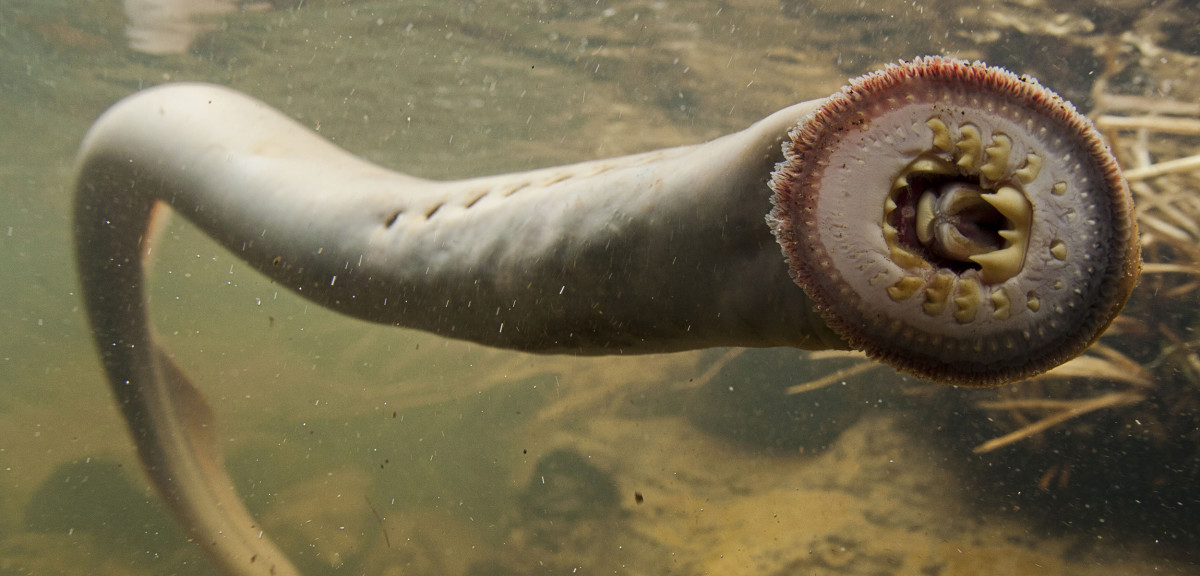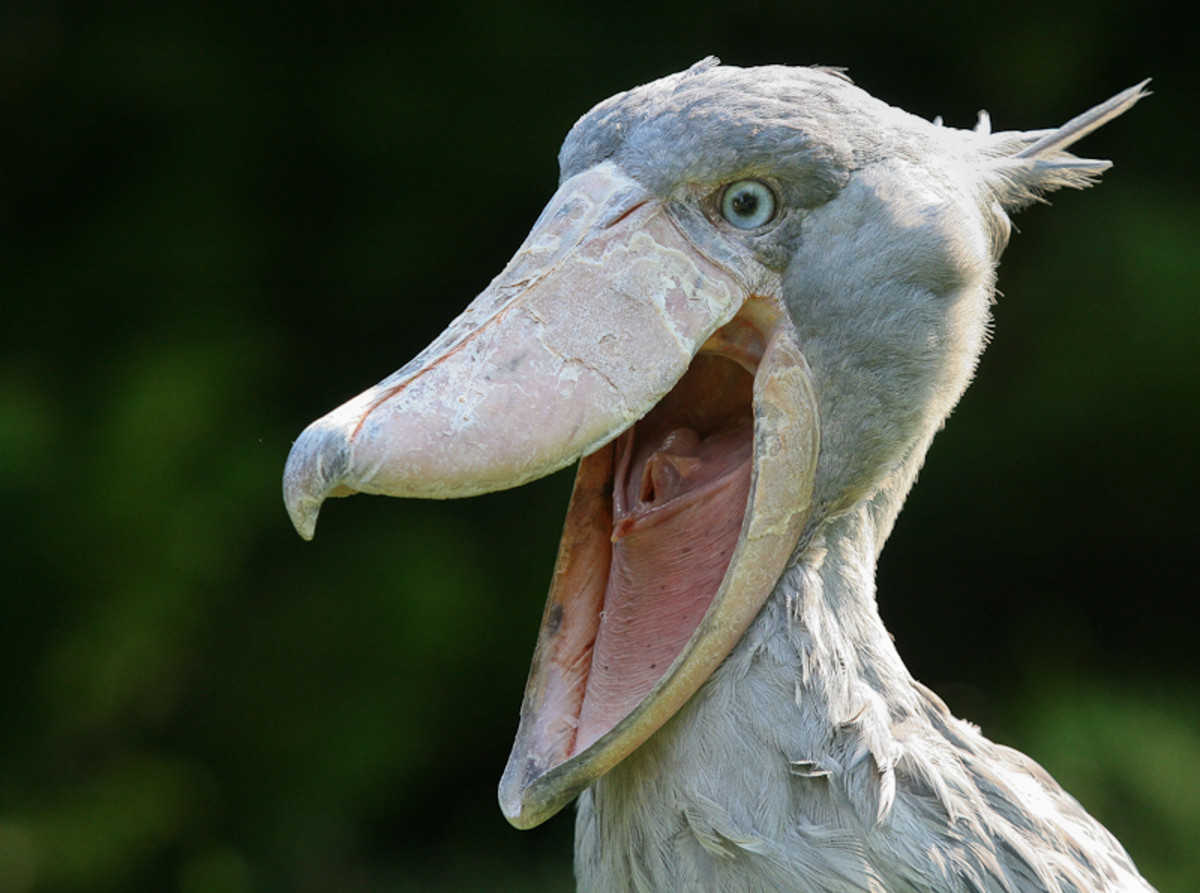Mollusks Are Invertebrates
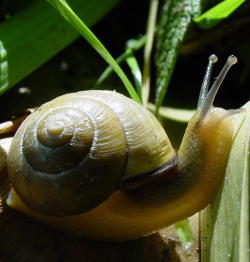
Mollusks: Snails, Squids, Octopuses, Scallops, and More.
Squids, Cuttlefish, Octopuses, Snails, Slugs, Clams, Scallops, Naulituses and many other animals are all classified as Mollusks. In fact, the Phylum Mollusca is the second largest phyla in the Animalia Kingdom! (Arthopoda is the largest phyla.)
On this page, I'm going to discuss the common characteristics of mollusks, as well as introduce you to some of the many types of mollusks!
Observing live mollusks in your yard, or at a beach, stream, lake, or even an aquarium would be an ideal way to learn about mollusks, and I encourage you to take that opportunity if it presents itself. But since some of you may not be able to do that, I've provided several videos (many of them only seconds long) so you can see for yourself what mollusks are like! Some of these videos were taken by individuals on a trip to the beach, while others were taken as a documentary by organizations, or by a teacher introducing the subject of mollusks to her students.
I encourage you not to skip the videos! If time doesn't allow you to watch them all, please watch as many as you can. They're worth it.
Giant Clams are a type of Mollusk!
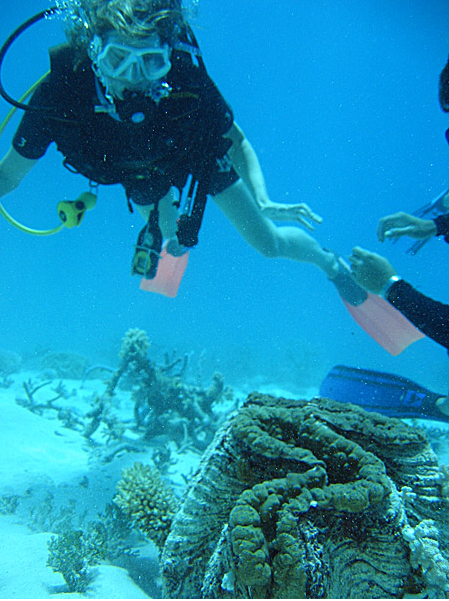
Giant Clam with Scuba Divers
Phylum Mollusca - 3 Main Body Parts: A Foot, Mantle, and Visceral Mass
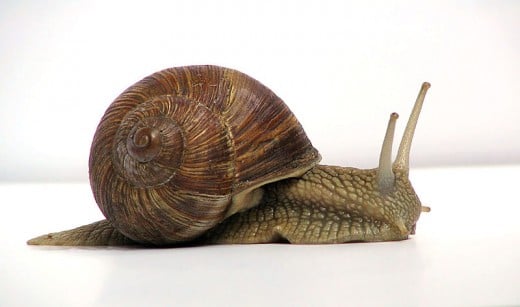
- A Mollusk has three main parts to his body: The muscular foot, the visceral mass and the mantle.
- The foot is used to help the mollusk get around.
- The visceral mass is the main part of the mollusk and is where the organs are located. (It's under the shell, in those mollusks that have shells.)
- The mantle is the tissue that covers the visceral mass (It's just under the shell and helps to secrete the shell.).
- In addition to those three main body parts, many mollusks also have a shell that protects their soft bodies. The shell is an exoskeleton. Bivalves, like clams, have two shells that are hinged together. Snails have one shell that is coiled. Most cephalopods (such as squids and octopuses) do not have shells, even though they are mollusks. Slugs do not have shells either, or only have reduced shells.
Radula - A Rasping "Tongue" - A radula is like a tongue with teeth
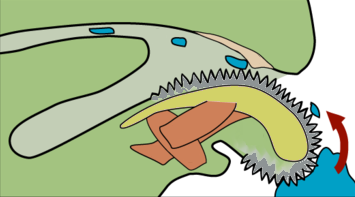
A radula is like a tongue with backward curving teeth on it! It's located completely inside the mouth except when a mollusk pushed it out in order to use it. Mollusks use their radulas to scrape food off of surfaces or to bore into the shells of prey.
Although Bivalves (clams, oysters, and other organisms that have a two part hinged shell) do not have radulas, all other mollusks do.
In the drawing above, the blue represents the food. The brown are the muscles that control the radula. The body of the mollusk is shown in green.
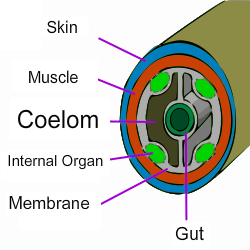
More Characteristics of Mollusks - Coelom, shell, organs and organ systems, bilateral symmetry
- Mollusks have a true coelom. A coelom is a fluid filled body cavity in which the organs are suspended. (For most Mollusks, the heart can be found in the coelom.) For more about coeloms, please visit: Coelom.
- Most mollusks have bilateral symmetry. Bilateral symmetry means that the left side looks the same as the right.
- Mollusks have organs and organ systems. An organ system is a group of organs that work together. In Mollusks, the organ systems include those for circulation, respiration, digestion, excretion, and reproduction. (Recall that neither sponges nor cnidarians had organs or organ systems.)
- Mollusks (as well as annelids) have a larval stage called a trochophore. A trochophore develops from a fertilized egg. Some mollusks have trochophores which swim with the help of cilia (tiny hairs that can move).
The larval stage of a mollusk.
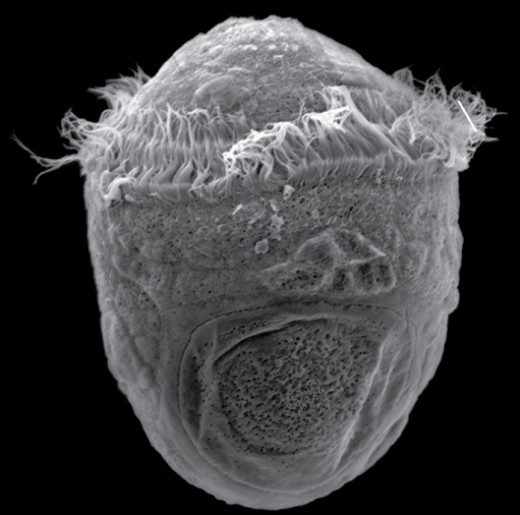
Mollusk Anatomy - Although not all mollusks have this same body shape, they do all have organ systems for circulation, respiration, excretion, and reproduction.
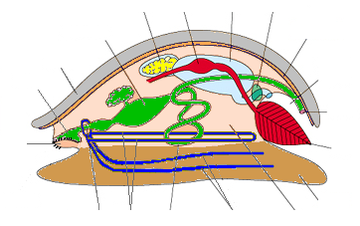
Digestive & excretory system - Green
Circulatory & respiratory - Red
Central nervous system - Blue
Reproductive system - Yellow
1 Radula (like a tongue)
2 Mouth
3 Shell
4 Stomach
5 Gonad (makes gametes)
6 Heart
7 Coelom (body cavity)
8 Nephridium (tubes that remove waste)
9 Mantle (covers the visceral wall)
10 Mantle cavity
11 Anus
12 Gill
13 Foot
14 Hemocoel
15 Pedal nerve cord
16 Gut
17 Visceral nerve cord
18 Nerve ring
Mollusks are divided into three categories: Gastropods, Bivalves, and Cephalopods
The Three Main Categories of Mollusks
There are three main types of mollusks.
Gastropods means, "Stomach footed" and includes many types of snails and slugs. Unlike Bivalves (see below), gastropods that have shells have only one part to their shell. Not all gastropods have shells though. The "foot" of a gastropod is what allows gastropods to get around either by crawling on land or on the surface of the water (like a pond snail), jumping along the floor of the ocean (like conches), or swimming (like the sea hare).
Cephalopods are mollusks with mostly just a head and arms, such as octopi and squids.
Bivalves are the mollusks with shells that have two parts that are hinged together. Examples include oysters, clams, scallops, and mussels.
Gastropods
"Stomach footed"
Snails, Slugs
Slug

Snail
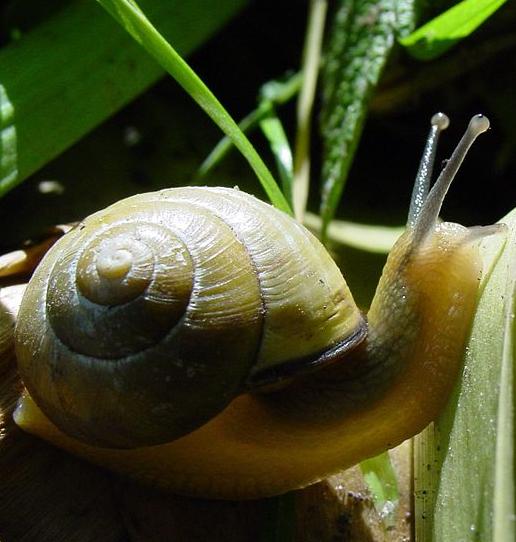
Periwinkle
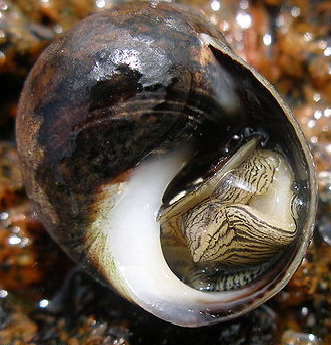
Perwinkles
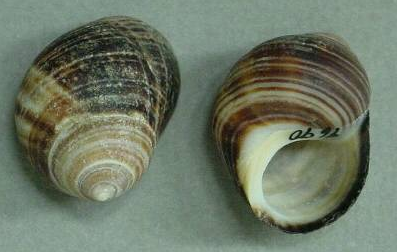
Conch
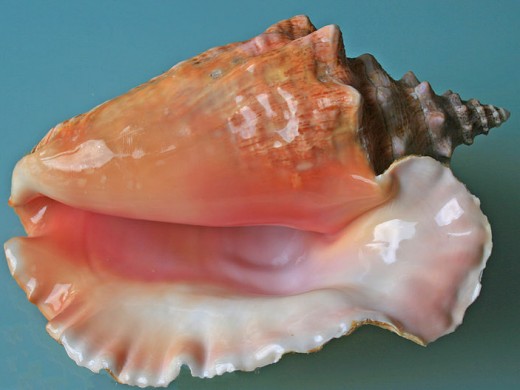
Gastropods include Conches, Whelks, Periwinkles, Slugs, Sea Slugs, Snails, and more
- Gastropods can be so tiny they're microscopic! Yet the biggest gastropod, Aplysia (a sea hare), can be up to 1 m (40 inches) long!
- Gastropods that live on land secrete a slimy mucusfrom their foot. This helps them glide more easily over the ground.
- The eyesof most gastropods are on the very tips of tentacles they have on their heads.
- Gastropods use their single, yet strong, muscular foot for moving around. They accomplish this via muscle contractions!
- Gastropods can live on land or in water. There are types of snails and slugs living in both places. (A conch, for example, is a type of snail that lives in water!)
- Snails that live on land have a mantlewhich functions as a lung. The mantle of a gastropod is also responsible for secreting the shell, for those that have one.
- Snails have a single shell which is usually coiled. A snail's shell is big enough for the snail to pull all his body parts into, for protection. Slugs either do not have a shell or have a very reduced shell.
- Gastropods that are herbivores use their radulas to scrape food off of surfaces or even saw off leaves. Gastropods that are carnivorous use their radulas to drill holes into the shells of other animals before sucking the soft bodies of their prey right out of their shell! A few types of gastropods, called cone shells, shoot a poison tipped barbed "dart" (a modified radula) into their prey.
Cone Shells shoot a poison tipped "dart" into their prey! The paralyzed prey can then be swallowed whole.
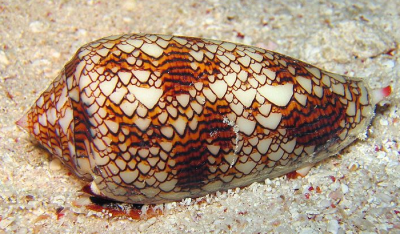
Watch as these conches use their feet to flip themselves over.
This California Sea Hare can grow up to 30 inches (75 cm) long! When threatened, it releases a cloud of ink.
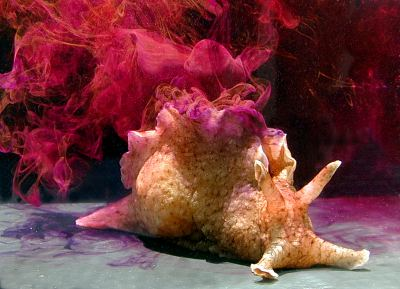
Cephalopods
"Head Footed"
Octopuses, Squid, Nautiluses
Nautilus
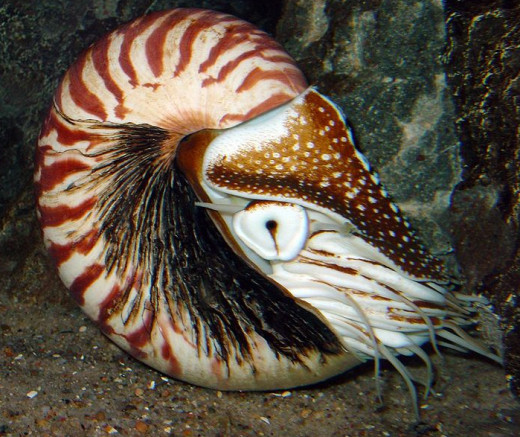
European Squid
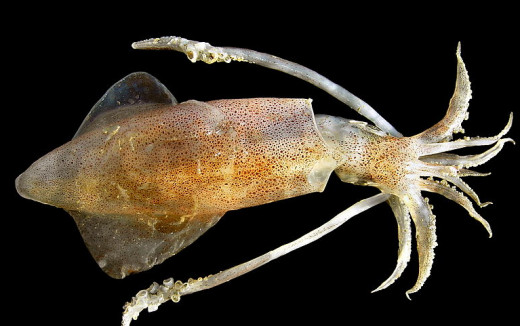
Octopus
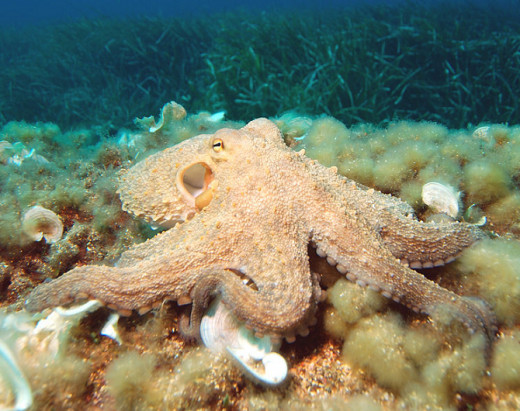
Octopus Swimming
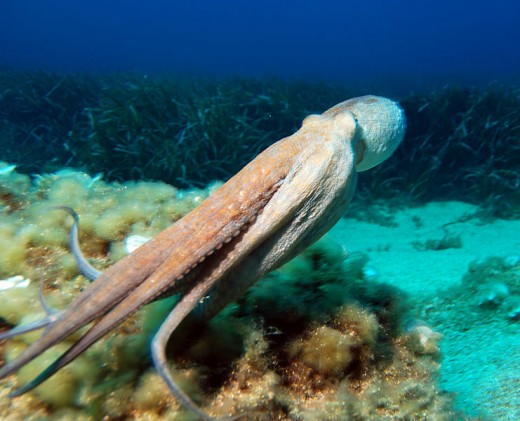
Cephalopods - Octopuses, Squid, Cuttlefish, Nautiluses
- Cephalopods are mostly just a head and tentacles or arms!
- In cephalopods, the "muscular foot" takes on the form of tentacles or arms covered in suction cups or hooks. Cephalopods use their tentacles or arms for grabbing prey.
- Most cephalopods do not have a shell. A nautilus does have a shell.
- It is believed that cephalopods are the most intelligent invertebrates! They have a well developed brain and a complex nervous system.
- The eyes of cephalopods are very similar in structure to that of vertebrates. Some cephalopods can even see in color.
- Cephalopods draw water into their mantle cavity and then expel it via their siphon.
- Octopuses and squids can jet quickly forward by forcefully shooting water out of their siphons.
- Octopuses, squids, and cuttlefish can all release a dark ink which allows them to hide from predators.
- Cephalopods eat other mollusks, fish, crustaceans, and worms.
Giant Pacific Octopus
Cuttlefish are able to change colors quickly.
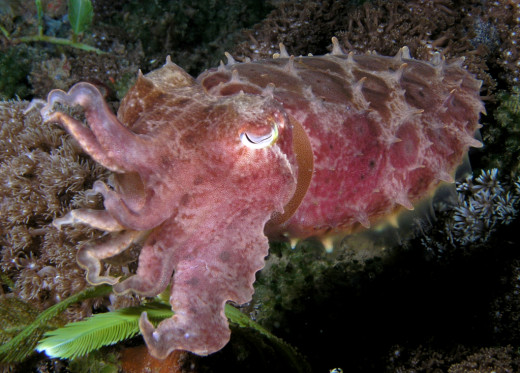
Cuttlefish change colors easily for camouflage.
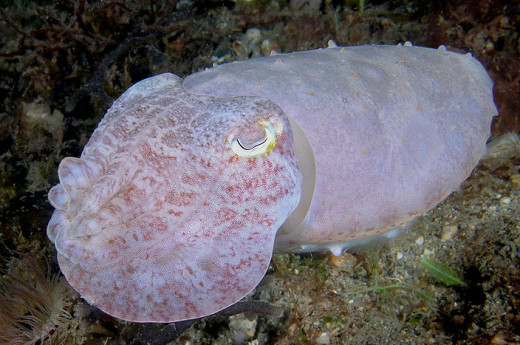
This is the exact same cuttlefish as in the photo above.
This photo was taken only a few seconds later! Notice how he's changed color!
Cuttlefish Using Camouflage
Cuttlefish
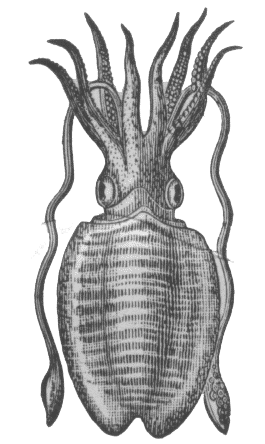
How Many Tentacles/Arms Does A Cephalopod Have?
A Cuttlefish has 2 tentacles and 8 arms.
An Octopus has 8.
A Squid has 10
Nautiluses have 80 to 90!
Squid Releasing Ink As An Escape Mechanism
Do Giant Squids Really Exist? - Yes, they do.
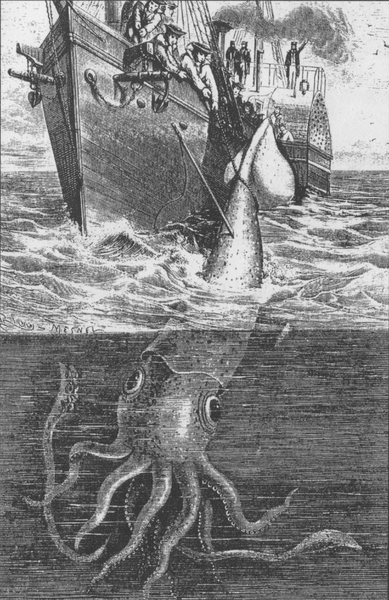
Real giant squids do exist!
To see a photo of a real giant squid, as well as read some information about them, check out the National Geographic Article On Giant Squids.
Chambered Nautilus
Bivalves
"Shells with 2 hinged parts"
Clams, Oysters, Scallops, Mussels
Oyster
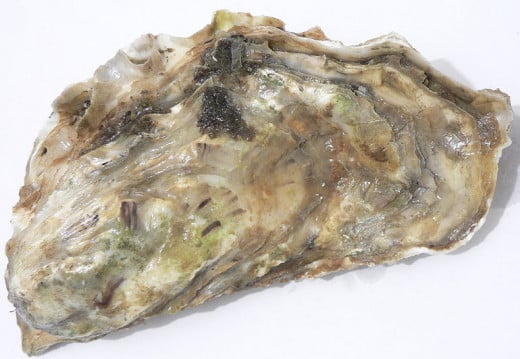
Mussel
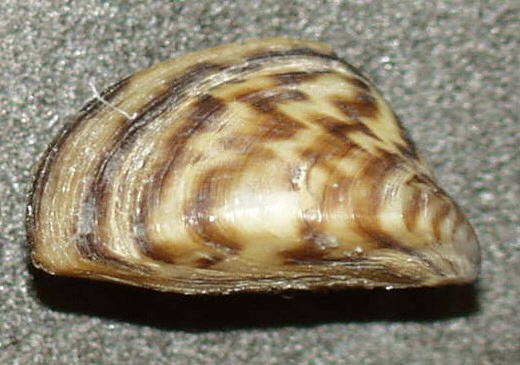
Clam with a siphon and foot
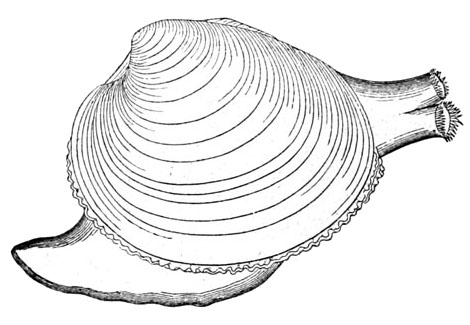
Scallop
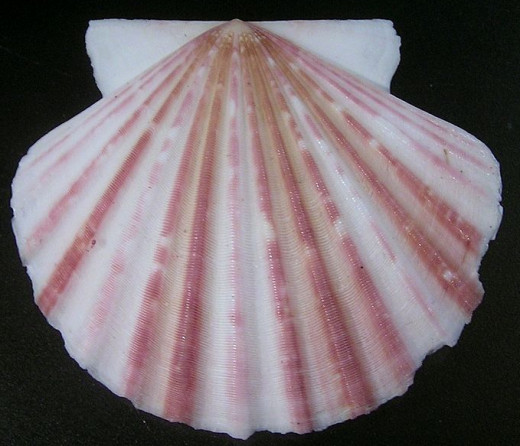
Bivalves - Bivalves have 2 shells hinged together
- Bivalves are animals like clams that have two shells hinged together. The two shells are hinged via adductor muscles. The shells close tightly together when the muscles contract, and partially open when the muscles are relaxed.
- Bivalves do not have a head. So where is their brain, you might be asking? They have a simple brain (a nerve ganglion) above their foot. They also have some sensory cells that respond to light and touch.
- Bivalves also do not have a radula (the "tongue with teeth" that other mollusks have). That's because they are filter feeders. They eat tiny marine organisms that are in the water.
- Siphons are tiny tubes that allow water (and tiny bits of food) to come into the shell, pass over the gills where food gets stuck, and then leave via the other siphon. Cilia (tiny hairs that can move) help get the food stuck in the mucusy gills into the bivalve's mouth. You can see a short video clip of a sea snail using his siphon in the water.
- How do bivalves move? Scallops sometimes open and close their shell rapidly, causing jets of water to be ejected in the process, moving them forward. Clams don't move a lot, but do burrow into the sand. At times, clams use their muscular foot to move rapidly across the sand. Watch the youtubes below to see for yourself just how clams and scallops are capable of moving!
Clams
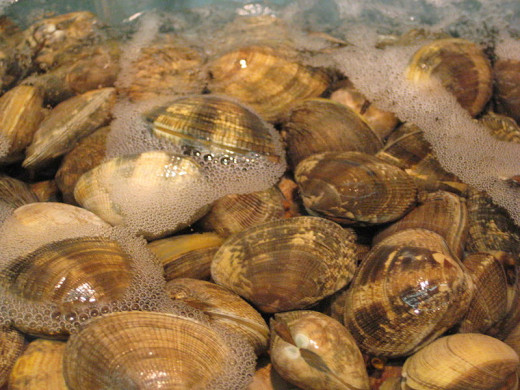
Giant Clam
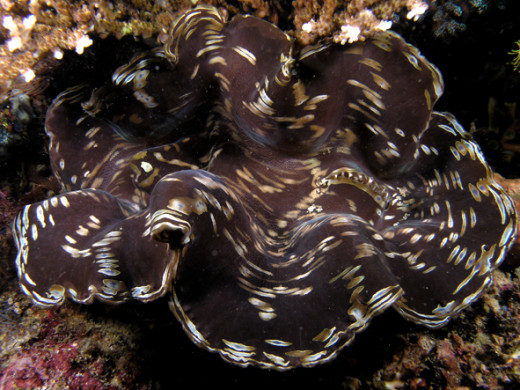
Bivalves In Motion!
- Short Youtube Videos - Watch these bivalves move across the sand with their feet, swim in the water, and defend themselves against starfish!
Scallop Defending Himself From A Starfish
Another Scallop Defending Himself. Watch him spin around and open and close his shell.
Clam Using His Foot To Move (Roll? Flip?) Across The Sand
© 2012 JanieceTobey

